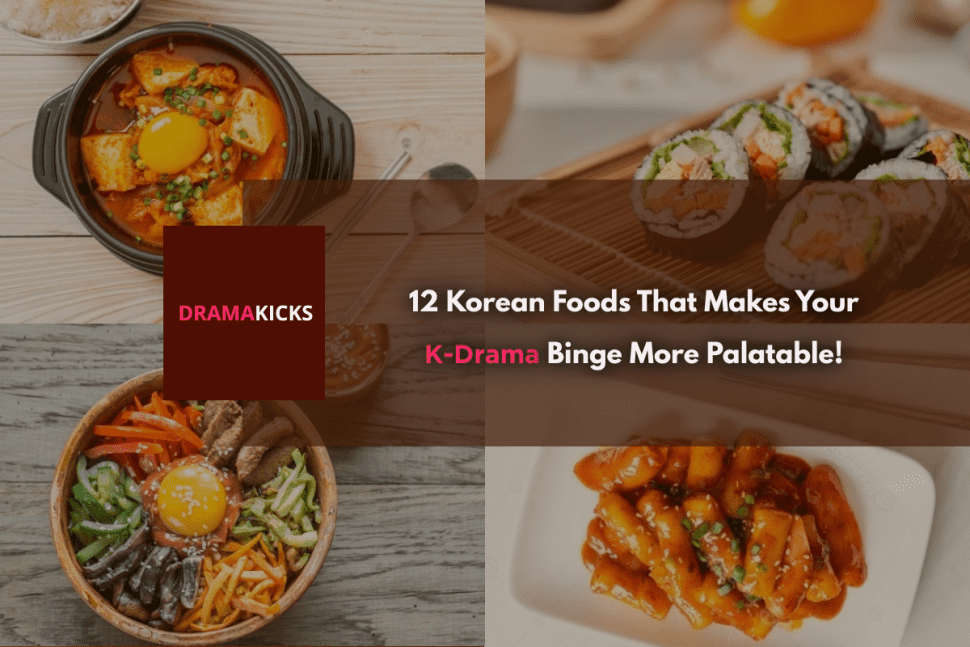Besides the engaging plotlines and interesting characters, K-dramas also opened our eyes and appetite to Korean cooking. Even for newbies, you can easily see how they enjoy their food culture, and there’s a lot of interesting finds for those who are interested enough to notice!
Here’s a list of the 12 popular foods commonly found in K-dramas!
Ramyeon

Ramyeon, or what we simply call instant noodles, has gained more popularity than ever before with help from the Korean wave, and its seemingly ubiquitous presence in K-dramas. It has become all the rage as it took over kimchi with exports hitting a record high in 2020 at US$603 million amid the rising demand for ready-to-cook meals in the thick of the COVID-19 pandemic.
South Koreans are spoiled for choice as ramyeon makers compete to introduce new and exciting flavors. Even traditional foods such as army stew and gamjatang (pork bone soup) have found their way into ramyeon packets. Besides being a gastronomic equivalent of a warm hug, an invitation to eat ramyeon has turned into a sexual innuendo of sorts.
It all started in the 2001 movie One Fine Spring Day. The main character, Eun-soo (played by Lee Young-ae), was the first to say the line, “Do you want to eat ramyeon?” to her love interest. Since then it’s become part of Korean modern dating culture which suggests, “Do you want to sleep with me?” These days, the phrase “Ramyeon meokgo galrae?” is often delivered more as a joke, although it serves its purpose by enabling people to invite or initiate romance especially if one couldn’t muster the courage to be more explicit.
Tteokbokki

Another K-drama food staple is tteokbokki, the tubular rice cakes swimming in a mix of sweet and spicy gochujang sauce. It’s made even more sinfully delicious by adding melted cheese.
This dish is commonly eaten when friends meet up to gossip. It’s readily available at street food vendors, and the price is generally pocket-friendly too. It then makes sense that it’s among the tasty morsels often spotted in Korean shows, whether with other Korean dishes, as a standalone snack, or as bar chow. All the tteokbokki scenes must have fueled your curiosity and cravings, and we promise that it’s worth trying!
The most memorable moment over this Korean staple was in the 2019 drama, Romance is a Bonus Book, where Cha Eun-ho (Lee Jong-suk) and Kang Dan-i (Lee Na-young) shared a heartfelt kiss.
Skewered Fish Cakes
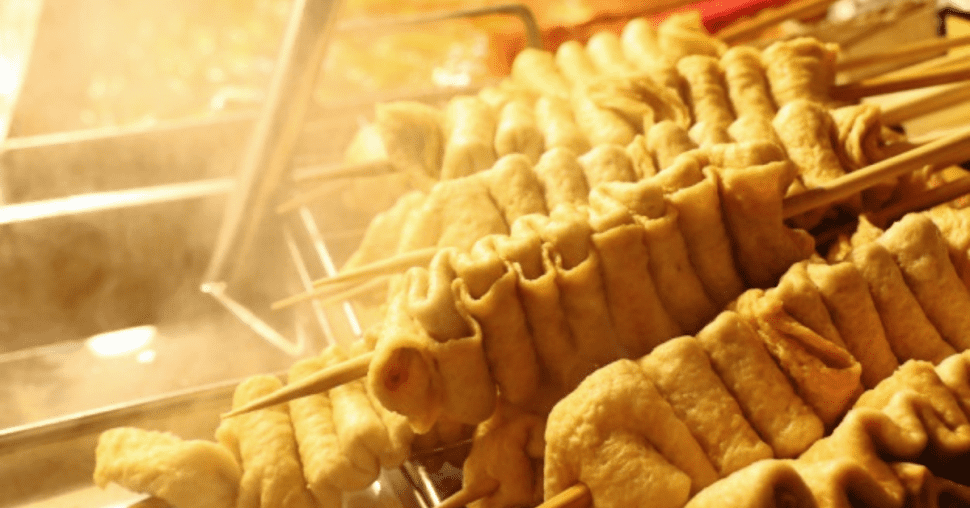
Besides tteokbokki, another street food staple that may have ticked your curious taste buds are fish cake skewers, also called eokuk or odeng. It’s a processed seafood product that is made of ground white fish, typically a mix of Alaskan pollock, cod or tilapia, and other ingredients such as starch, potato, and vegetables. They are usually cooked and served with broth in Korea to give it more flavor and are then threaded onto wooden skewers.
Odeng is extremely cheap, delicious, and enjoyable to eat. It’s practically a mainstay in every food stall in Korea. It’s also filling enough for those looking for a light meal, or if you’re on a budget. Our adorable weightlifting fairy, Kim Bok Joo, enjoyed it so much that she had no qualms about finishing her fourth and fifth stick!
Korean Corn Dog
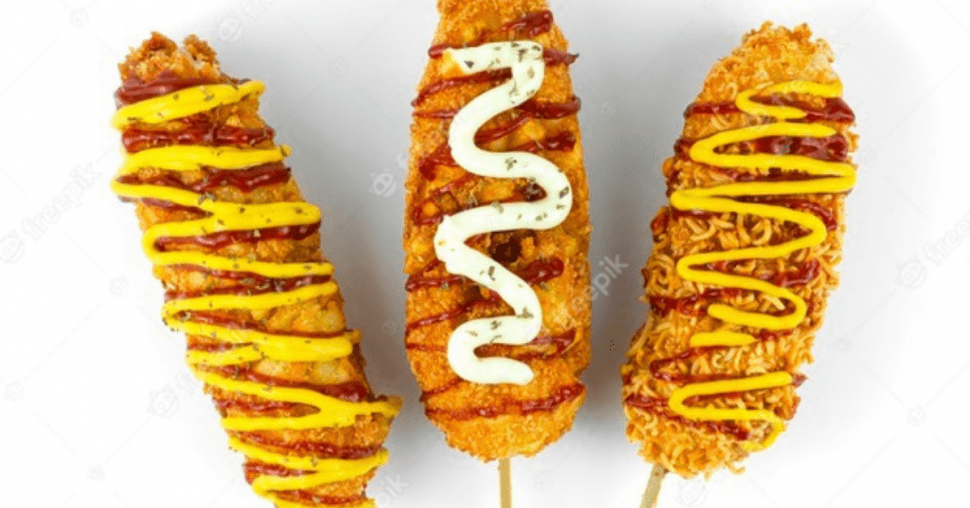
Usually right next to skewered odengs, you’d most likely see Korean corn dogs freshly fried and crispy. They’re basically just corn dogs but with a Korean twist! For the filling, the choices can run the gamut from sausage to mozzarella, or a combination of these. Then it’s deep-fried with a light dusting of sugar or some ketchup or mustard for a yummier experience.
One can remember how our favorite “good boy” in the 2020 hit Start-Up really enjoyed Halmoni Choi’s corn dogs that would make you crave for it too!
Bungeoppang
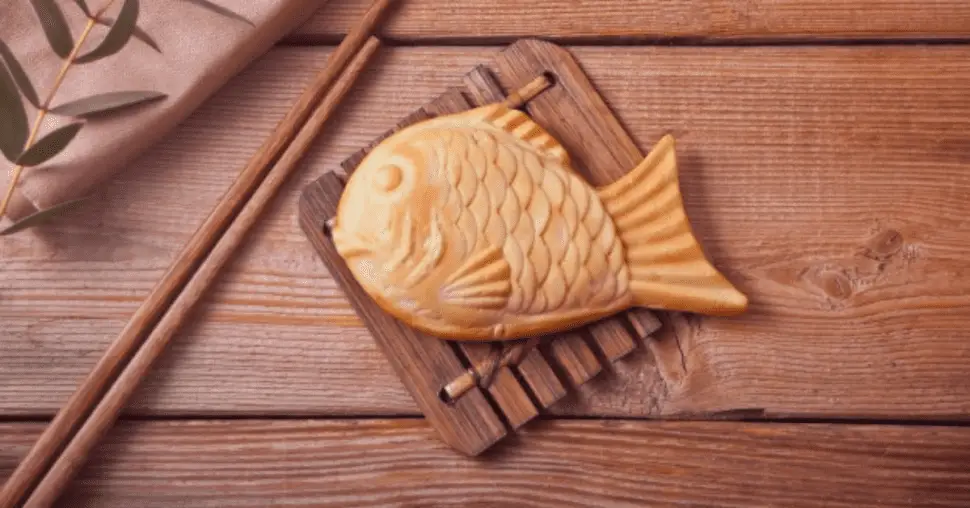
Bungeoppang is a Korean name for the Japanese taiyaki, which only shows how that latter’s culture influenced Korean cooking. “Bungeo ” is a crucian carp and “ppang” is bread. This is a fish-shaped pastry that is particularly popular in the winter streets of Korea.
The batter is poured into a fish-shaped mold and then it is followed by a sweet red bean paste. This is common all over Korea, that you’d see your friendly neighborhood ajumma or ajeossi selling them in a cart.
This treat is best eaten warm! Imagine just biting into that soft exterior and right into that sweet filling oozing from inside. Besides red beans, other bungeoppang are now filled with custard, jam, or even chocolate! Bungeoppang was featured in many dramas, like Vincenzo, Legend of the Blue Sea, Welcome to Waikiki 2, and Please Don’t Date Him, to name a few.
Korean Fried Chicken
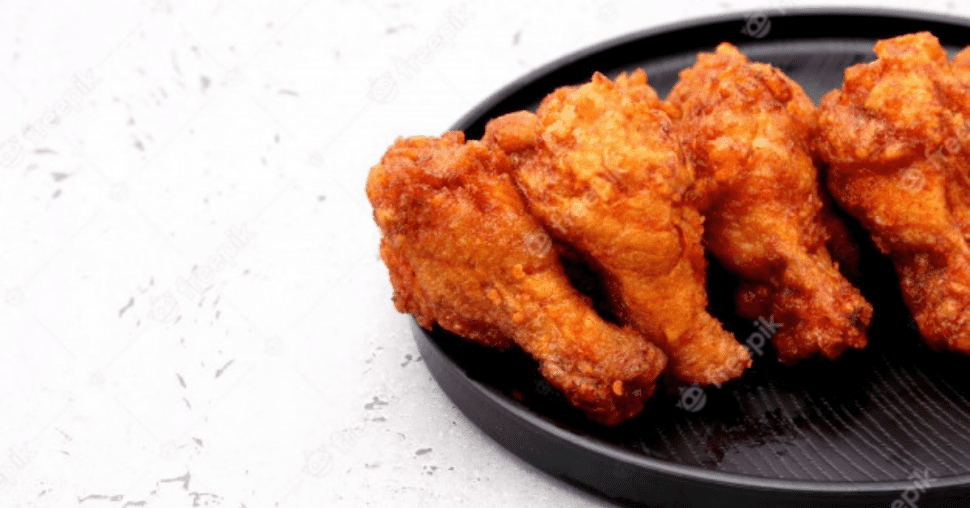
Koreans love their chicken and they like it fried and crunchy! The dish is pretty straightforward: It’s fried chicken but prepared in such a way that makes it unique. While its American cousin is usually brined and dredged in a flour and buttermilk mixture, Korean fried chicken tends to be light and crispier with a thin, almost paper-like, skin that is not heavily battered. It’s also typically seasoned with soy sauce, but there are many flavors to choose from like garlic and honey.
Koreans like their fried chicken with rice, and some with banchan of their choosing. Others just wing it and devour it on its own by hand — just how Lee Min-ho’s character enjoyed it in The King: Eternal Monarch. Our favorite Ri-Ri couple in the hit series Crash Landing On You enjoyed their crunchy fried chicken with beer, and everybody liked that too just like a match made in K-drama heaven! Mashisoyo (It’s delicious)!
Jajangmyeon
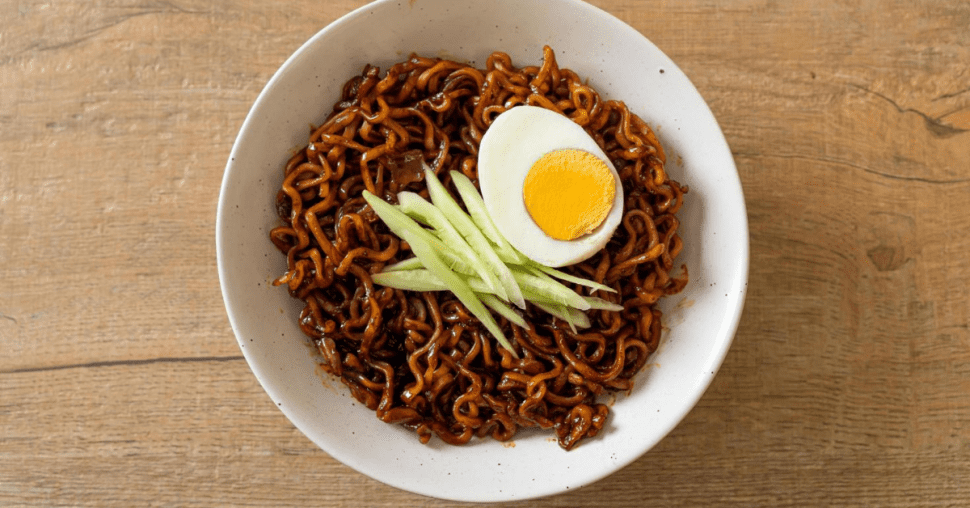
Jajangmyeon is the Korean take on black bean noodles which actually originated in China. It’s made up of fresh udon noodles that are bathed in signature chunjang (black soybean paste) that will often leave your teeth black while you indulge in its hearty flavors. The dish is usually served with danmuji (a yellow pickled radish), sliced raw onions, diced meat, and vegetables.
Jajangmyeon gives a perfect blend of sweet and tasty, and that depends on the black bean paste and meat that goes into the sauce. Overall, it tastes like udon noodles and spaghetti noodles, just that it is thicker and a little bit chewier.
In Korea, this dish is often consumed by singles on Black Day when they don’t receive presents for Valentine’s and White Day. It’s their comfort food where they gather and ‘commiserate’ over all things black, including food. Jajangymeon is featured prominently in the drama Coffee Prince where Eun-Chan (Yoon Eun-hye) showed us how much of it she can eat! It was also featured in dramas like Fantasy Couple and Let’s Eat.
Korean Barbecue

Many beloved Korean dramas feature iconic food clips that involve Korean barbecue, but the way Kim Bok-joo and her troops enjoyed their grilled meat takes the cake. In the scene, Bok-joo teaches her weightlifting teammates the best way to eat a full Korean Barbecue course.
But you can approach it whichever way you want. You can feast on the grilled meat first. Better to start with plain meat first and then make your way to marinated slices. You can also wrap them in greens if that’s your thing, or you can choose to top it over fried rice—even better if it’s hot! Then, you can tie it all together with a bowl of cold glass noodles.
Bibimbap
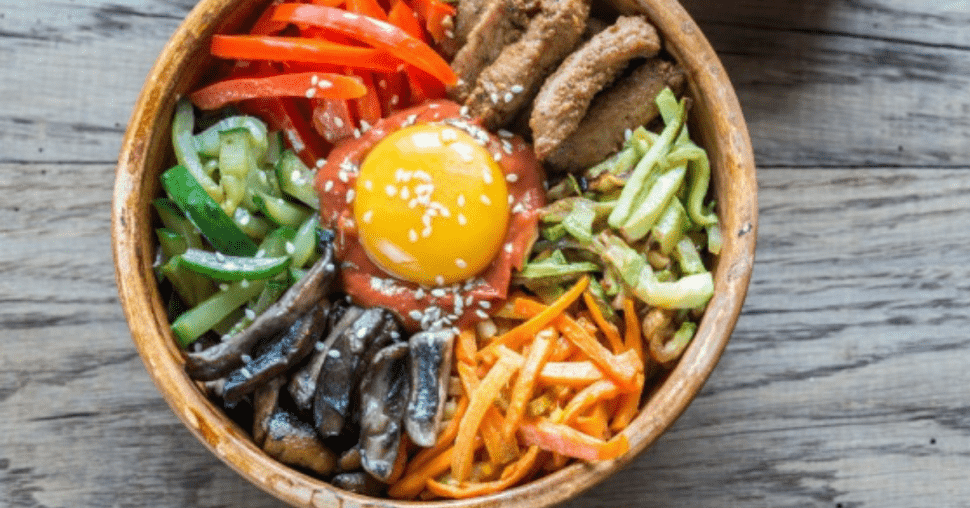
Simply put, Bibimbap is a rice topping dish that has to be mixed together to form this hodgepodge of flavor. It’s composed of vegetables, strips of beef, sesame oil, chili pepper paste, and sometimes topped with a sunny-side-up. In k-dramas, you would often see actors throwing in pretty much what they can find in the fridge to make their own spin to it.
One of the most memorable times where bibimbap was in the spotlight was in Full House. In the series, Song Hye Kyo’s character had this big appetite that she would often have scenes eating heartily anywhere! One of the most memorable Korean dishes she was seen gobbling down in the series was Bibimbap, which some would say is a more filling version of Kimchi-bokkeum-bap, or kimchi fried rice.
Kimbap
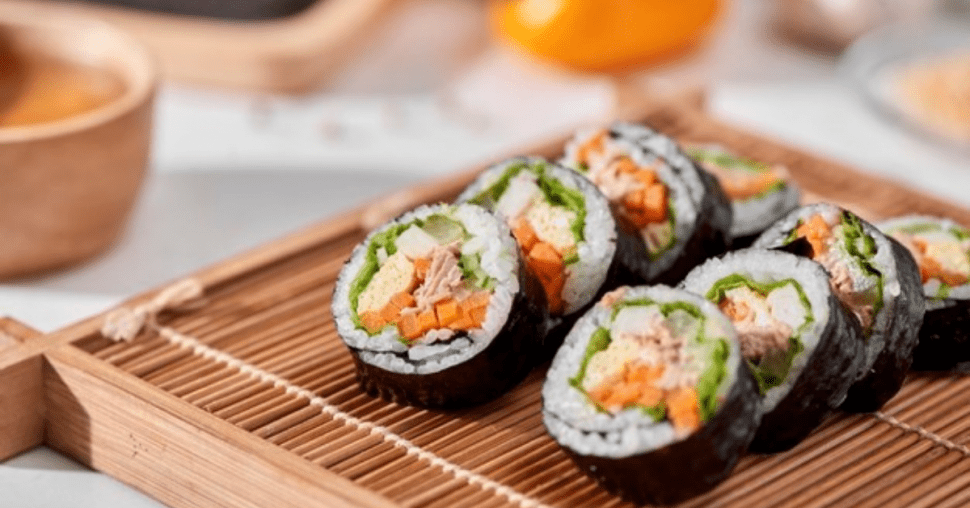
If you look back on Korean history, one theory states that kimbap was actually born out of the Japanese occupation of Korea. This is why it holds a striking resemblance to the Japanese sushi roll. Koreans made it their own by tweaking the recipe. Instead of rice vinegar, they used sesame oil to season the rice before rolling.
The “kim ” in kimbap (also called gimbap) refers to the dried laver which is used to wrap the rice roll. You can also find triangle kimbap which can be seen in just about every convenience store in Korea. In K-dramas, it’s usually featured as an affordable meal for students or anybody who’s strapped for cash.
Kimbap is a dish that is considered beginner-friendly. The flavors are not so new and foreign, and it’s not hard to love. If you’re brave enough to get into a Korean mukbang, kimbap would be a good addition to your spread.
Omurice
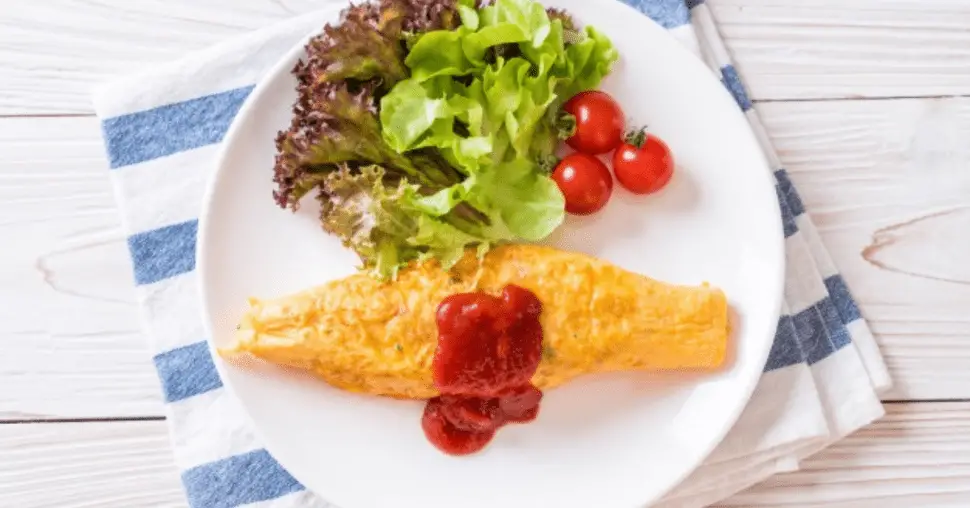
Omurice, which is a play on words to describe fried rice that is wrapped in an egg omelet, is a fusion dish that combines the Asian fried rice and western omelet plus ketchup. It’s actually a Japanese dish, but its Korean version is also popular in South Korea.
From the 70’s to 90’s, omurice was a popular menu item in Western-style cafes in Korea. Today, omurice is commonly found at fast-food restaurants. You may even see k-drama moms whip this dish up for their kids. But it first spiked in popularity after appearing in the Rooftop Prince.
Sundubu-jjigae
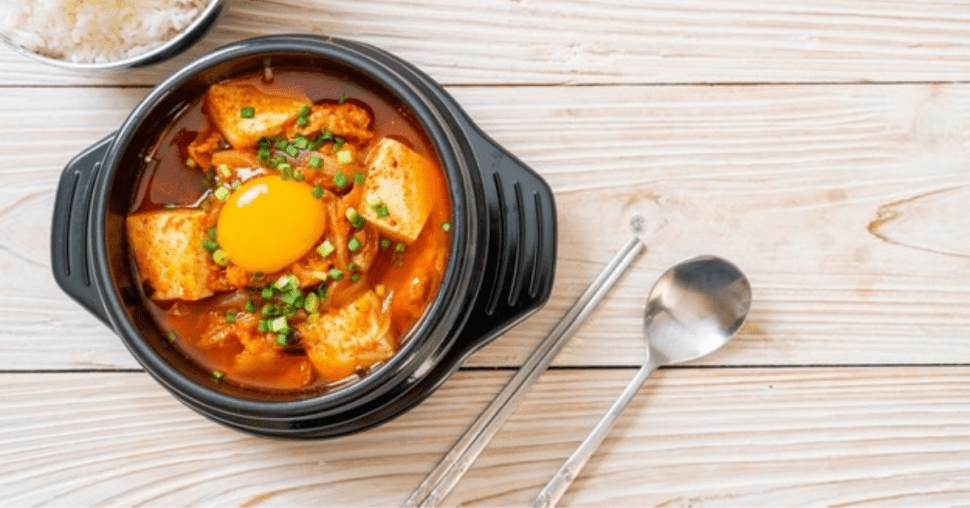
Park Seo Joon’s character in Itaewon Class enjoyed sundubu-jjigae so much, he had it in his list of comfort foods. In fact, this dish made it into some of the show’s most memorable scenes. It’s a thick and spicy soup that has been slow-cooked with anchovy stock, radish, dried kelp, kimchi, and soft tofu as the highlight ingredient. Some also throw in some pork belly slices and an assortment of meat for good measure!
In Itaewon Class, they showed that this soup should be slurped and followed by a cold bottle of soju, especially if you’re having a bad day. This soup is a bit spicy but in the most delightful way. With soft uncurdled tofu, it yields the silkiest texture.

